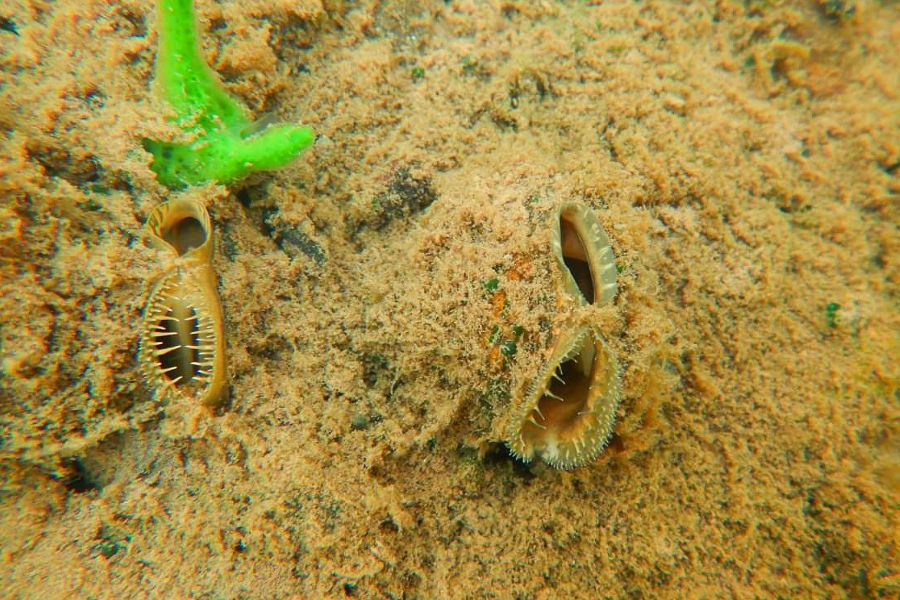A small creature faced with a big environmental task
Brook floaters are threatened by climate change, invasive species and pollution

Considering how important freshwater mussels are in restoring and maintaining the health of the Bay’s tributaries, it can be a big concern that many native mussel species, such as the brook floater, are endangered.
The brook floater (Alasmidonta varicosa) is a small to medium sized freshwater mussel that has a yellowish-green shell in its youth, and a more brownish-black coloring when it reaches its adult stage. These mussels are often found in rivers and streams with consistently flowing water and substrates that have sandy or gravelly bottoms, where they burrow into the sediment to anchor themselves.
Like other freshwater mussels, brook floaters help keep waterways clean by filtering bacteria, algae, and plant and animal debris out of the water. The colonies they form at the bottom of the water stabilize the substrate, creating shelter and breeding grounds for various fish and invertebrates. Brook floaters also play an important role in the food chain, as prey for many aquatic mammals such as otters and muskrats.

Unfortunately, this species has seen a significant decline in population, which has put them in the endangered category. Nutrient and sediment runoff and other forms of pollution make some waterways uninhabitable for these mussels. Rising water temperatures resulting from climate change also threaten brook floaters. Even mild increases in water temperatures have shown to negatively impact the species’ filtration rates, immune response and survival in general. Brook mussels even face competition for resources from invasive species such as the zebra mussel.
With freshwater mussels in general being among the most endangered groups within the Chesapeake Bay watershed, many organizations are starting to provide more support to the species.
Since 2019, the Anacostia Watershed Society has successfully released more than 24,000 mussels into the Anacostia, which filters the equivalent of 132 olympic-sized swimming pools on an annual basis. The Maryland Department of Natural Resources has also started a 3-year program to restore freshwater mussels in the Susquehanna River while also conducting scientific research and public outreach. To guide this kind of restoration, the Chesapeake Bay Foundation is developing an interactive map that identifies high quality freshwater mussel habitat.
Only time will tell how effective these efforts are at removing our native mussel species from the endangered list. To learn more about the variety of mussels living in the Bay watershed, visit our field guide.

Comments
There are no comments.
Thank you!
Your comment has been received. Before it can be published, the comment will be reviewed by our team to ensure it adheres with our rules of engagement.
Back to recent stories